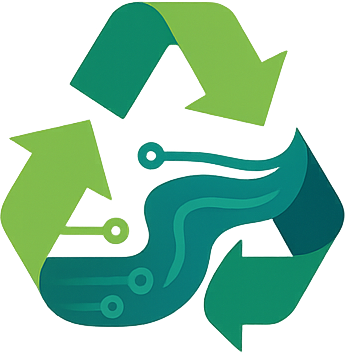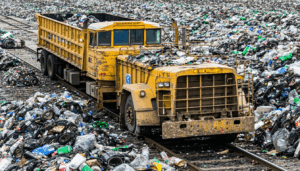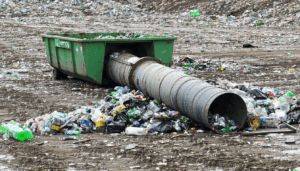In the United States, the management of chemical waste disposal has become a pressing concern as industries grapple with environmental regulations and public health risks. Recent developments, including stricter federal guidelines and innovative technologies, are reshaping how hazardous materials are handled. This article explores the latest updates in chemical waste disposal, their impact on businesses and communities, and what lies ahead for sustainable practices. From new policies to cutting-edge solutions, these changes signal a pivotal moment in addressing one of the nation’s most critical environmental challenges.
New Federal Regulations on Chemical Waste Disposal
In early 2023, the U.S. Environmental Protection Agency (EPA) introduced updated regulations aimed at tightening controls over chemical waste disposal. These rules mandate stricter tracking of hazardous materials from production to final disposal, ensuring accountability across industries like manufacturing and pharmaceuticals. The EPA estimates that over 60 million tons of hazardous waste are generated annually in the U.S., with improper disposal linked to groundwater contamination and air pollution.
Under the new guidelines, companies must submit detailed reports on waste management practices by mid-2024. Non-compliance could result in hefty fines or operational shutdowns. This move underscores the government’s commitment to reducing environmental harm while holding corporations responsible for their waste footprint.
Technological Innovations Driving Change
Beyond regulations, technology is playing a transformative role in chemical waste disposal. Advanced treatment methods, such as plasma arc technology and bioremediation, are gaining traction for their ability to neutralize toxic substances effectively. For instance, a recent pilot program in California successfully treated over 10,000 gallons of industrial solvents using microbial processes, reducing harmful emissions by 85%.
According to Dr. Emily Harper, a leading environmental scientist at Stanford University, “Innovative technologies are revolutionizing how we manage chemical waste. These solutions not only minimize environmental impact but also offer cost-effective alternatives for businesses.” Such advancements signal a shift toward sustainable practices that could redefine industry standards.
Impact on Businesses and Communities
The evolving landscape of chemical waste disposal has significant implications for stakeholders. For businesses, compliance with new regulations often means higher operational costs, with small and medium-sized enterprises facing the greatest burden. A 2023 survey by the National Association of Manufacturers found that 68% of companies expect to spend an additional $500,000 annually on waste management upgrades.
Meanwhile, communities near industrial zones are advocating for greater transparency. Residents in areas like Flint, Michigan, have raised concerns about chemical runoff affecting local water supplies. Grassroots movements are pushing for stricter oversight, ensuring that disposal practices prioritize public safety over profit.
Economic and Environmental Stakes
The stakes of effective chemical waste disposal extend beyond immediate compliance. Economically, the hazardous waste management industry is projected to grow to $28 billion by 2027, driven by demand for specialized services. Environmentally, proper disposal prevents long-term damage to ecosystems, preserving biodiversity and reducing cleanup costs, which currently exceed $1 billion annually for federal Superfund sites.
However, challenges remain. Some critics argue that current regulations favor large corporations with resources to adapt, leaving smaller firms struggling. Others believe enforcement lacks teeth, pointing to a 2022 EPA report showing that 15% of inspected facilities violated waste disposal rules without significant penalties. Balancing economic growth with environmental protection remains a delicate task.
Looking Ahead: Future of Chemical Waste Management
As the U.S. navigates these challenges, the future of chemical waste disposal hinges on collaboration between policymakers, industries, and innovators. Experts predict that within the next decade, circular economy models—where waste is repurposed into usable resources—could become mainstream. Pilot projects recycling chemical byproducts into construction materials are already underway in states like Texas and Ohio.
The potential for international cooperation also looms large, as chemical waste often crosses borders through trade. Aligning U.S. policies with global standards could enhance accountability and reduce illegal dumping. Ultimately, sustained investment in research and public awareness will be key to achieving long-term sustainability.
Conclusion
The latest strides in chemical waste disposal reflect a growing recognition of its environmental and economic importance in the United States. From stringent EPA regulations to groundbreaking technologies, these efforts aim to safeguard public health while fostering industry innovation. Though hurdles like cost disparities and enforcement gaps persist, the path forward lies in unified action and forward-thinking solutions. As policies evolve and technologies advance, the nation stands at a crossroads to redefine how it manages one of its most complex environmental issues.
Frequently Asked Questions (FAQs)
-
What is chemical waste disposal?
It refers to the process of safely handling, treating, and disposing of hazardous chemical substances to prevent harm to the environment and human health. -
Why are new regulations being implemented in the U.S.?
Recent EPA rules aim to address rising concerns over pollution and contamination from improper disposal, ensuring stricter oversight of industrial practices. -
How do new technologies help with chemical waste?
Innovations like bioremediation and plasma arc technology break down toxic materials more efficiently, reducing environmental impact and operational costs. -
What can communities do to stay informed?
Residents can engage with local environmental agencies, attend public hearings, and support advocacy groups to ensure safe disposal practices near their areas. -
Are there penalties for non-compliance?
Yes, companies failing to meet EPA standards may face fines, legal action, or operational restrictions depending on the severity of violations.





